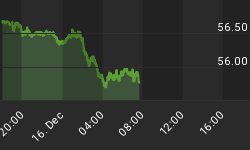Trader uncertainty over tomorrow's Fed statement and concern over rising Treasury yields and the government's ability to cover its debt obligations contributed to the weakness in the U.S. Dollar on Tuesday.
The uncertainty is coming from one group of traders that wants the Fed to announce an exit strategy while another group is hoping the Fed steps up its Treasury purchases.
The start of a record Treasury auction today raised concerns that the government debt was growing too large to finance. Some traders fear that a debt rating service would eventually have to flag the U.S. as a credit risk.
The EUR USD traded sharply higher as traders bet the Fed would leave interest rates at current levels and announce tomorrow that they would most likely hold off increasing rates until early next year. The Euro got an additional boost on the thought that the European Central Bank would also leave interest rates unchanged even though it has room to cut.
The key area to watch for resistance is 1.4100. Traders get nervous when the Euro is trading in this area out of fear the European Central Bank would try to talk it down. Some traders fear that Euro Zone exports would slow down if the price of the Euro were allowed to rise. The main trend is down, but a trade through 1.4177 will turn the main trend up and indicate a test of 1.4337 is likely.
The GBP USD continued to maintain its bullish status on Tuesday. For the second time in a week, traders could not break the support at 1.6211. The strong close indicates that the buying may continue tomorrow as this market is within striking distance of a pair of main tops at 1.6621 and 1.6663. Based on the current chart pattern, strength is likely to develop on a breakout over 1.6694. The first sign of weakness will be a failure to hold 1.6211. If downside momentum builds then the break may accelerate to 1.6114.
Weakness in the equity markets contributed to the sell-off in the USD JPY. Japanese investors are selling Dollars during this week phase in the stock market in order to preserve capital. The lack of trader demand for risky assets is also putting downside pressure on the market. A key retracement level at 95.77 was broken with conviction. This price is now resistance. Based on the weak close, a further decline to 94.28 is possible.
A rebound in commodity prices helped the Canadian Dollar gain ground against the U.S. Dollar. Technically, the main trend is up in the USD CAD, but today's closing price reversal top indicates the possible start of a correction of the 1.0941 to 1.1583 range. This would set up a retracement zone at 1.1262 to 1.1186.
The inability of the USD CHF to break through the pair of main tops at 1.0955 and 1.0986 and the major retracement price at 1.0980 finally convinced traders to give up and try the short side of this market. The break through the minor retracement range at 1.0788 and 1.0741 indicates that a test of the two main bottoms at 1.0649 to 1.0590 is likely.
The AUD USD chart pattern is a tough one to decipher. The series of lower tops and lower bottoms is indicative of toping action; however traders seem reluctant to sell weakness. Last night the Aussie showed signs of weakness by breaking through a main bottom at .7849 but ran into support slightly above a retracement price at .7761. Today's action indicates uncertainty and position evening ahead of tomorrow's FOMC statement.
Today's action in the NZD USD indicates short-covering since this pair was unable to break through any significant tops. A pair of tops at .6467 and .6483 is providing resistance at this time. Even if these prices were violated, the market still has to deal with the high for the year at .6590. On the downside, support is an old bottom at .6236 and a retracement price at .6211.
The best way to describe the NZD USD is range bound, however, the longer this market stays in a range, the more you can could on volatility returning.
















